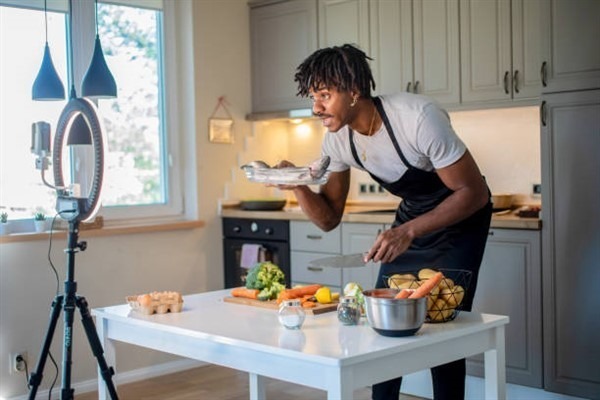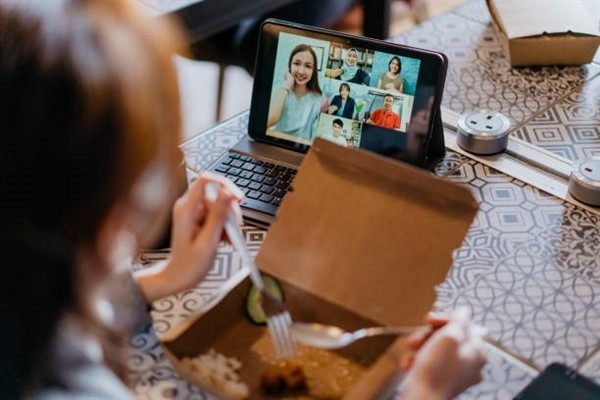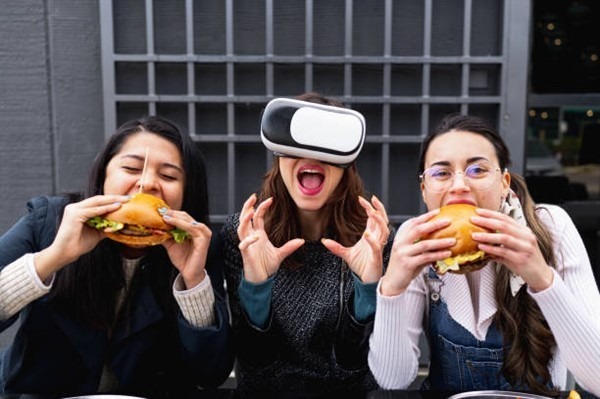Introduction
In a world where technology has become an integral part of our daily lives, the way we experience and interact with food is undergoing a profound transformation. The rise of virtual food experiences marks a significant evolution in our culinary journey, offering a unique blend of gastronomy and technology.
In this post, we will explore the various dimensions of this emerging trend, from virtual cooking classes and digital tastings to the fusion of technology and gastronomy, and the impact of virtual food experiences on the way we connect with food in an increasingly digital age.
Defining Virtual Food Experiences
Before delving into the intricacies of this growing phenomenon, it’s essential to establish what virtual food experiences entail. These experiences leverage digital platforms, augmented reality (AR), virtual reality (VR), and interactive technologies to bring food-related activities to individuals, transcending geographical boundaries and providing an immersive culinary encounter.
The Evolution of Virtual Food Experiences
From Physical to Digital: The Shifting Landscape of Culinary Exploration
The transition from traditional, in-person culinary experiences to virtual platforms has been accelerated by the convergence of technological advancements and the changing dynamics of our global society. The appeal lies in the accessibility and convenience of participating in culinary adventures without leaving the comfort of one’s home.
Technology as a Culinary Gateway
Technology is no longer confined to the realm of gadgets and screens; it has become a gateway to new culinary realms. Virtual food experiences offer a dynamic way to explore diverse cuisines, engage with renowned chefs, and partake in interactive cooking sessions, creating a seamless bridge between the digital and culinary worlds.
The Virtual Cooking Class Revolution
Beyond Recipes: Interactive Culinary Learning
Virtual cooking classes have become a cornerstone of the virtual food experience landscape. These classes go beyond providing mere recipes; they offer interactive, step-by-step guidance from chefs worldwide. Participants can learn to create intricate dishes, explore regional cooking techniques, and engage in real-time Q&A sessions, fostering a sense of community among cooking enthusiasts.
Global Culinary Exploration from Your Kitchen
One of the remarkable aspects of virtual cooking classes is the ability to embark on a global culinary journey without leaving your kitchen. Whether you’re learning the art of sushi from a master chef in Tokyo or perfecting the art of pasta-making with an Italian nonna, the possibilities are as vast as the culinary world itself.
Digital Tastings and the Art of Sensory Exploration
Beyond Borders: Tasting Without Traveling
Digital tastings represent a groundbreaking shift in the way we experience and appreciate flavours. Through carefully curated kits delivered to your doorstep, participants can engage in guided tastings of wines, chocolates, cheeses, and more, all under the virtual guidance of experts. This not only allows for a sensory exploration of different flavours but also promotes a deeper understanding of the intricacies of each tasting experience.
Pairing Technology with Palate: A Multisensory Affair
The fusion of technology and gastronomy in digital tastings is a multisensory affair. With the use of AR and VR, participants can virtually visit the vineyards where their wine was produced or witness the chocolate-making process in a distant artisanal workshop. This immersive approach elevates the tasting experience, creating a more profound connection between the consumer and the product.

The Fusion of Technology and Gastronomy
Augmented Reality (AR) in the Culinary Landscape
Augmented reality is leaving an indelible mark on the culinary world. From interactive recipe apps that overlay cooking instructions on your kitchen counter to AR-enhanced dining experiences that bring menus to life, this technology is enhancing our understanding and appreciation of food.
Virtual Reality (VR) Dining: A Feast for the Senses
VR dining experiences take immersive gastronomy to a new level. Through VR headsets, diners can embark on virtual journeys while enjoying a meal, whether it’s dining underwater, exploring a rainforest, or even dining on a spaceship. This innovative approach transforms the act of eating into a multisensory adventure.
The Impact on Culinary Education and Accessibility
Democratising Culinary Knowledge
Virtual food experiences have the power to democratise culinary knowledge. Aspiring chefs and cooking enthusiasts from diverse backgrounds can access world-class instruction, breaking down barriers to entry and fostering a more inclusive culinary community.
Accessibility for All: Breaking Geographical Constraints
Geographical constraints are no longer a hindrance to culinary exploration. Virtual food experiences enable individuals from different corners of the world to connect, share, and learn from each other. This interconnectedness contributes to the global exchange of culinary traditions and techniques.
The Social Aspect of Virtual Food Experiences
Building Online Culinary Communities
Beyond the act of cooking or tasting, virtual food experiences contribute to the creation of vibrant online communities. Participants share their creations, exchange tips, and form connections with like-minded individuals, fostering a sense of camaraderie that transcends borders.
Digital Dinner Parties and Remote Celebrations
Virtual food experiences extend beyond solo culinary adventures. Digital dinner parties and remote celebrations allow friends and family to gather online, share a meal and create lasting memories. This innovative approach to socialising has become particularly significant in an era where physical gatherings may be limited (the recent COVID-19 pandemic for example).

Challenges and Considerations in the Virtual Food Experience Landscape
Ensuring Authenticity in a Digital Realm
Maintaining authenticity in virtual food experiences poses a challenge. While technology can replicate the visual and auditory aspects of a culinary journey, capturing the essence of taste and aroma remains a hurdle. Striking a balance between technological innovation and the genuine sensory experience is crucial for the continued success of virtual food encounters.
Overcoming Technological Barriers
Access to technology remains a determining factor in the widespread adoption of virtual food experiences. As the digital divide persists, ensuring that these culinary innovations are accessible to a broad audience becomes a challenge that industry players must address.
Case Studies: Pioneering Virtual Food Experience Platforms
Explore the success stories of virtual food experience platforms that have paved the way for this burgeoning trend. From global cooking communities to innovative tastings, these platforms showcase the diversity and creativity inherent in the virtual culinary landscape.
MasterClass: Learning from Culinary Icons
MasterClass, with its roster of renowned chefs like Gordon Ramsay and Massimo Bottura, has revolutionized online culinary education. Participants can learn from the masters themselves, gaining insights into their techniques and philosophies.
Tasting Experiences: The Wine and Beyond
Platforms like SommSelect and Flaviar have redefined the wine and spirits tasting experience. By curating and delivering tasting kits to participants’ doorsteps, these platforms create a bridge between the physical and virtual worlds, allowing consumers to explore and appreciate beverages in a new light.
The Future of Virtual Food Experiences: Emerging Trends
As virtual food experiences continue to gain momentum, several trends are shaping the future of this burgeoning industry.
Enhanced Immersion Through Technology
Advancements in AR and VR technologies will contribute to even more immersive virtual food experiences. From lifelike culinary simulations to interactive dining environments, these innovations will redefine the boundaries of what is possible in the digital culinary realm.
Personalised and Adaptive Experiences
The integration of artificial intelligence (AI) and machine learning will enable virtual food experiences to become more personalised and adaptive. From tailoring recipes to individual dietary preferences to suggesting unique tasting pairings based on personal flavour profiles, technology will play a pivotal role in catering to the specific preferences of each participant.
Conclusion: Embracing a Digital
In conclusion, the rise of virtual food experiences signifies a transformative chapter in our culinary journey. As technology continues to intertwine with gastronomy, the virtual realm opens up new possibilities for exploration, education, and connection.
Whether you’re embarking on a virtual culinary tour, participating in a global cooking class, or savouring a curated tasting from the comfort of your home, the future promises a digital culinary landscape as diverse and exciting as the flavours it showcases. As we savour the future, one digital bite at a time, let the fusion of technology and gastronomy guide us into a new era of culinary exploration. Bon appétit in the virtual world!










